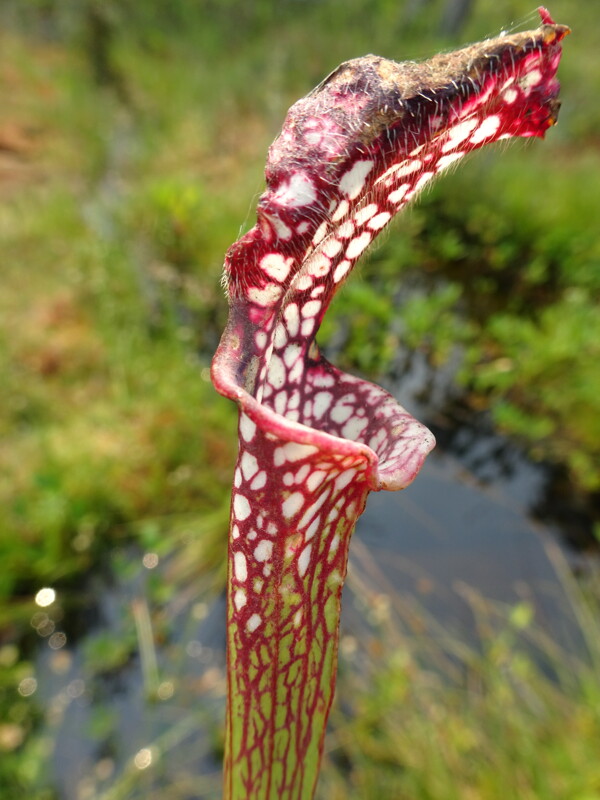Hosted by the University of Washington Herbarium, Burke Museum
Publication: Fl. Ludov. 14. 1817.
Origin: Introduced from southeast United States
Herbarium search: CPNWH
Notes: FNA8: "Sarracenia leucophylla occurs on the coastal plain of the Florida panhandle west of the Ochlockonee River, and across southern Alabama to southeastern Mississippi; it is rare in southwestern Georgia, introduced and established in southeastern Virginia, and a rare escape in Skagit County, Washington.
Sarracenia leucophylla is a striking plant, noticeable from a distance, and capable of forming extensive, nearly solid stands in open, wet meadows and seepage slopes and pine flatwoods across the Gulf Coast region. The number of populations has been severely reduced by development and fire suppression. Its spring pitchers are not as robust or profuse as the late-summer pitchers, the latter especially attracting moths. This species responds well to winter fires, resulting in abundant growth later that spring. In some managed areas, the attractive tubes are judiciously harvested and sold, fresh or dried, as "cut flowers" in florist shops. Pure white pitchers (no colored veins) with red petals or totally anthocyanin-free individuals with yellow petals occur.
Capsules of Sarracenia leucophylla dehisce acropetally rather than basipetally as in all other species in the family. G. W. Folkerts and D. R. Folkerts (1989) hypothesized that this adaptation allows seeds to be released with less likelihood of being caught and held by the persistent style discs."
Last updated 2/3/2024 by David Giblin.

